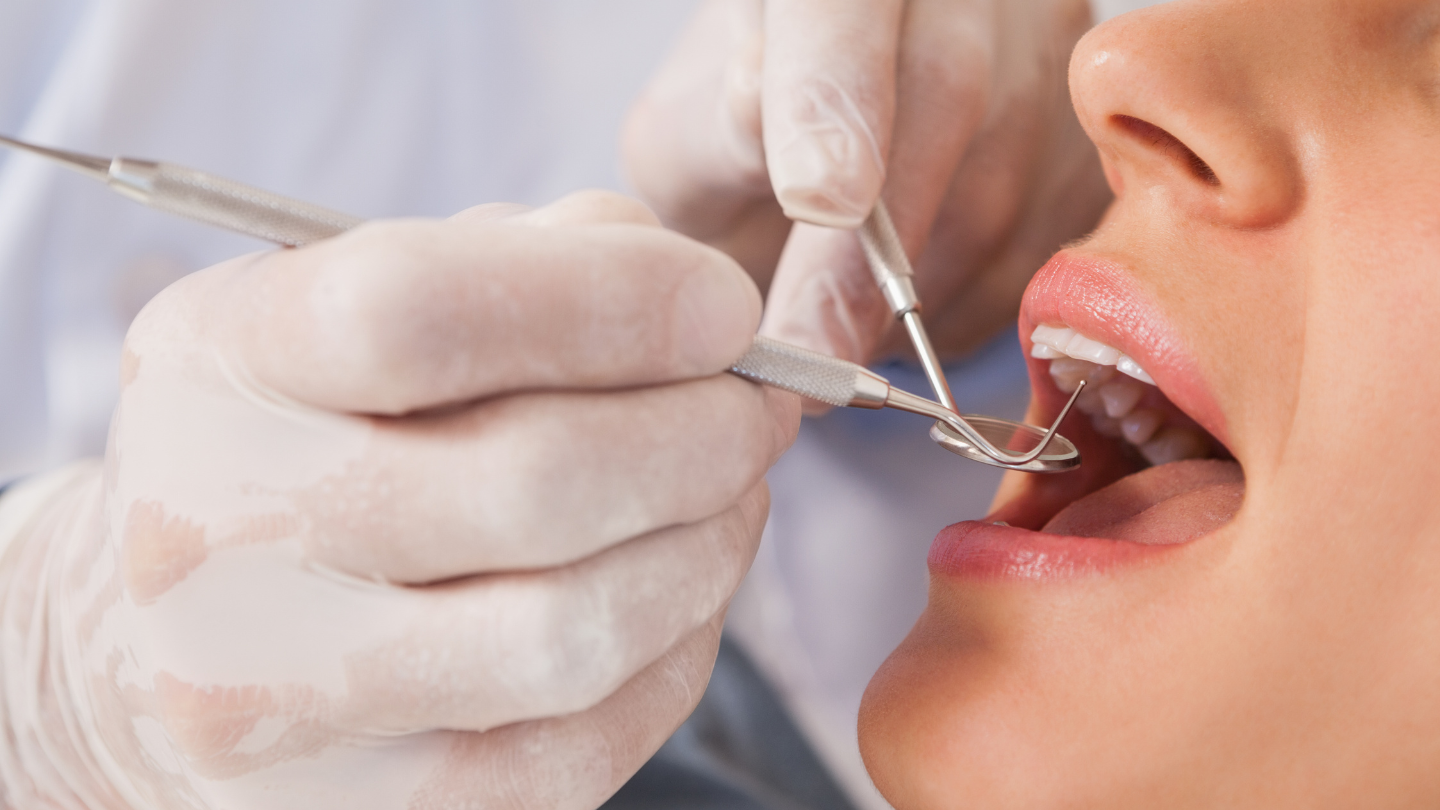Welcome to our blog post on restorative dentistry! If you’ve ever experienced tooth damage or decay, you know just how important it is to find effective solutions for repair. Restorative dentistry offers a range of techniques and procedures designed to restore the function and appearance of damaged teeth. Whether you have a chipped tooth, cavities, or missing teeth, this article will provide valuable tips and insights on how to effectively repair your teeth. So let’s dive in and discover the world of restorative dentistry together!
Understanding Restorative Dentistry
Restorative dentistry is a specialized branch of dental care that focuses on repairing and restoring damaged teeth. It goes beyond simply addressing cosmetic concerns; it aims to improve the overall function, health, and appearance of your teeth.
One of the key aspects of restorative dentistry is identifying the specific type of tooth damage. This could include cavities caused by decay, chips or fractures from accidents or injuries, or even missing teeth due to extractions or other reasons.
To effectively treat these issues, restorative dentists utilize various techniques and procedures tailored to each patient’s unique needs. These may include fillings for cavities, dental bonding for minor chips and cracks, crowns for more extensive damage, dental implants for missing teeth, and bridges to replace multiple missing teeth.
Prompt treatment is crucial in restorative dentistry. Ignoring tooth damage can lead to further complications such as infection or gum disease. Therefore, it’s important to seek professional help as soon as possible if you notice any signs of tooth damage.
By understanding the principles behind restorative dentistry and taking prompt action when needed, you can restore your oral health while enhancing your smile’s aesthetics. So don’t hesitate – consult with a qualified dentist today and begin your journey toward effective tooth repair!
Common Types of Tooth Damage
Tooth damage can occur for various reasons, and it’s important to be aware of the common types so that you can seek prompt treatment. One of the most prevalent forms of tooth damage is dental decay, also known as cavities. This occurs when plaque buildup leads to the erosion of enamel, causing holes in the teeth.
Another common type is tooth fractures, which can happen due to trauma or biting down on something hard. Fractures can range from minor chips to more severe breaks that require immediate attention.
Additionally, teeth grinding or bruxism can lead to wear and tear on your teeth over time. This repetitive motion puts excessive pressure on your teeth, resulting in cracks or even tooth loss if left untreated.
Gum disease is another cause of tooth damage. When bacteria accumulate along the gum line and aren’t properly removed through regular brushing and flossing, it can lead to inflammation and eventual deterioration of the gums surrounding the teeth.
Root canal infections are a significant source of tooth damage. If bacteria penetrate deep into a tooth’s pulp chamber, it can result in infection and potential abscess formation.
Understanding these common types of tooth damage allows you to take proactive steps towards prevention or seeking timely treatment from a restorative dentist. Remember that early intervention is key in preserving your oral health!
The Importance of Prompt Treatment for Tooth Repair
Prompt treatment for tooth repair is crucial to prevent further damage and maintain optimal dental health. When a tooth is damaged, whether it’s due to decay, trauma, or wear and tear, seeking immediate restorative dentistry can make all the difference in saving your smile.
One of the main reasons why prompt treatment is important is because it can help alleviate pain and discomfort associated with a damaged tooth. Ignoring or delaying treatment may allow the problem to worsen, leading to more severe pain and potential complications down the line.
Additionally, addressing tooth damage promptly can help prevent further deterioration of the affected tooth. Left untreated, minor issues like chips or cracks can develop into larger problems such as fractures or even complete loss of the tooth. Restorative dentistry techniques like fillings, crowns, or implants can effectively repair damaged teeth and restore their functionality.
Moreover, receiving prompt treatment for tooth repair also helps preserve overall oral health. Damaged teeth not only impact your ability to chew food properly but also affect speech clarity and self-confidence. By taking action early on through restorative procedures offered by experienced dentists, you are ensuring that your oral health remains intact.
In conclusion: Seeking prompt treatment for any type of tooth damage is crucial in maintaining dental health and preventing further complications. By addressing issues early on through restorative dentistry techniques such as fillings or crowns offered by qualified professionals, you are taking proactive steps towards preserving your smile’s functionality and aesthetics while avoiding unnecessary pain and future problems.
Techniques and Procedures Used in Restorative Dentistry
Restorative dentistry utilizes various techniques and procedures to repair damaged teeth, restoring both their functionality and aesthetics. One commonly used technique is dental fillings, which involve removing decayed portions of the tooth and filling the space with a material such as composite resin or amalgam. This helps to prevent further decay and restore the tooth’s natural shape.
Another procedure often employed in restorative dentistry is dental bonding. This involves using a tooth-colored resin material that is bonded directly to the tooth surface, repairing chips, cracks, or discoloration. Dental bonding can also be used as an alternative to traditional amalgam fillings for smaller cavities.
For more extensive damage or structural issues, dental crowns may be recommended. Crowns are custom-made caps that cover the entire visible portion of a tooth above the gum line. They provide strength and protection while also improving appearance by restoring shape, size, and color.
In cases where a tooth is missing entirely, dental implants offer a long-term solution for replacement. Implants consist of artificial roots made from titanium that are surgically placed into the jawbone. These implants act as anchors for prosthetic teeth (crowns), providing stability and durability.
Orthodontic treatments such as braces or aligners may also be considered part of restorative dentistry when they are used to correct misalignment issues affecting oral health.
These are just some examples of techniques and procedures utilized in restorative dentistry to repair damaged teeth effectively. It’s important to consult with your dentist to determine which approach best suits your specific needs for optimal results!
Tips for Maintaining Dental Health and Preventing Further Damage
Maintaining dental health is crucial for preventing further damage to your teeth. Here are some tips to help you keep your pearly whites in top shape!
1. Brush and floss regularly: Make sure to brush your teeth at least twice a day and floss once daily. This helps remove plaque, bacteria, and food particles that can lead to tooth decay and gum disease.
2. Use fluoride toothpaste: Fluoride helps strengthen the enamel of your teeth, making them more resistant to cavities. Look for toothpaste with the American Dental Association (ADA) seal of approval.
3. Eat a balanced diet: Limit sugary snacks and drinks as they can contribute to tooth decay. Instead, opt for nutritious foods like fruits, vegetables, dairy products, and lean proteins that provide essential vitamins and minerals for strong teeth.
4. Avoid tobacco products: Smoking or using smokeless tobacco increases the risk of oral cancer, gum disease, stained teeth, bad breath, and other dental problems.
5. Visit your dentist regularly: Regular check-ups with your dentist are important for detecting any oral health issues early on and getting prompt treatment if needed.
6. Protect your teeth during sports: If you play contact sports or participate in activities where there’s a risk of injury to the mouth area, consider wearing a mouthguard to protect your teeth from potential damage.
Remember that prevention is always better than cure when it comes to maintaining dental health! By adopting these simple yet effective tips into your daily routine, you can help prevent further damage to your precious smile!
Alternative Options to Traditional Restorative Dentistry
When it comes to repairing damaged teeth, traditional restorative dentistry techniques are not the only option available. With advancements in dental technology and treatments, there are alternative options that can provide effective tooth repair while considering individual preferences and circumstances.
One such alternative is biomimetic dentistry, which focuses on preserving as much of the natural tooth structure as possible. This approach aims to mimic the natural properties of teeth by using materials that closely resemble their appearance and function. Biomimetic restorations minimize the need for extensive drilling and reduce the risk of future complications.
Another alternative is laser dentistry, which utilizes advanced lasers to perform various dental procedures with precision and minimal invasiveness. Laser technology can be used for cavity removal, gum disease treatment, and even teeth whitening. It offers a more comfortable experience for patients who may have anxiety or sensitivity issues during dental treatments.
For those seeking a less invasive solution for minor tooth damage or cosmetic improvements, cosmetic bonding may be an appealing choice. This procedure involves applying a composite resin material directly onto the affected tooth to reshape it or improve its appearance. Cosmetic bonding is quick, affordable, and provides immediate results without having to remove any enamel.
In cases where extensive restoration is needed but conventional methods are not preferred or feasible due to personal reasons or medical conditions, removable partial dentures or implant-supported bridges may be considered as alternatives. These prosthetic devices offer functional replacements for missing teeth while allowing easy maintenance and flexibility.
It’s important to note that these alternative options should always be discussed with your dentist after a thorough examination of your oral health condition. They may not be suitable in every case but can present viable choices depending on individual needs and circumstances.
By exploring these alternatives alongside traditional restorative dentistry techniques, you can make informed decisions about how best to repair your teeth while considering factors such as aesthetics, comfort level during treatment procedures, longevity of results, and overall dental health.
Conclusion: Taking Action to Repair Your Teeth
Maintaining the health of our teeth is crucial for both our oral well-being and overall health. If you have experienced tooth damage, restorative dentistry offers effective solutions to repair and restore your smile. By understanding the common types of tooth damage and the importance of prompt treatment, you can take action to preserve your dental health.
Whether it’s a cavity, chipped tooth, or missing teeth, restorative dentistry techniques such as fillings, crowns, bridges, implants, and dentures are available to address various dental issues. These procedures are performed by skilled professionals who specialize in restorative dentistry.
To ensure optimal results from your restorative dental treatment, it is essential to follow good oral hygiene practices at home. Brushing your teeth twice a day with fluoride toothpaste and flossing daily will help prevent further damage and maintain the longevity of any dental work you’ve had done.
Additionally, regular visits to your dentist for check-ups and cleanings are vital. Your dentist can identify any potential problems early on before they worsen and require more extensive treatments.












